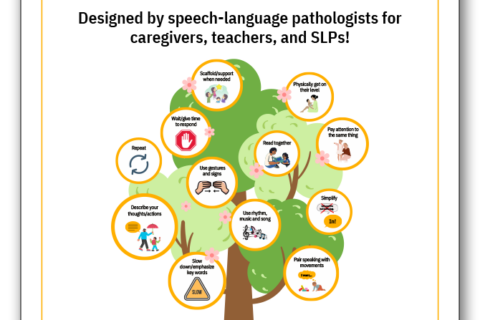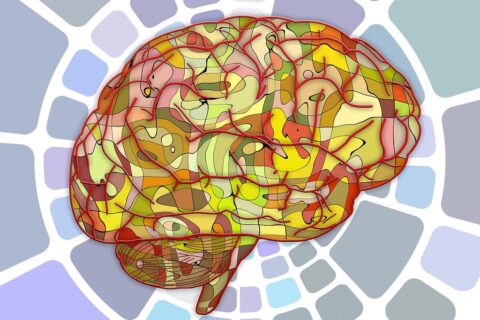Open Lines® Joins Leaders from Across the Globe at World Dysphagia Summit
In March, Dr. Jessica Galgano, founder and executive director of Open Lines Speech and Communication and one of LSVT Global’s international faculty instructors, joined leading scientists spanning many disciplines from across the globe at the World Dysphagia Summit (WDS).
LSVT Global’s faculty gathered with the world’s foremost experts in dysphagia (swallowing disorders) in San Francisco mid-March to collaborate, innovate, educate, and cheer lead each other’s efforts to enhance the care and treatment options for people living with swallowing difficulties.
“WDS was a unique and special opportunity to connect and collaborate with some of my most esteemed colleagues whose efforts are translating the highest standards of research to clinical settings to help meaningfully improve the lives of millions of people struggling to eat and swallow,” Dr. Galgano says.
Early Evidence to Support Impact of LSVT LOUD on Swallowing
Dr. Galgano and LSVT Global hold a long-standing connection to the dysphagia research community. While LSVT LOUD is recognized as the gold standard treatment for improving voice and motor speech function for individuals with neurogenically based communication disorders, such as Parkinson’s Disease (PD), multiple studies reveal the treatment additionally improves neuromuscular control of the entire upper aerodigestive tract.
Researchers have found that participants spanning a variety of neurological conditions, who completed the LSVT LOUD four-week intensive voice treatment which includes 1-hour sessions, four days a week for one month, gained better oral-pharyngeal swallow function in addition to improvements in speech and voice. (Aydinli et al., 2019; Nozaki et al., 2021).
Studies indicate LSVT LOUD treatment improves oral tongue and base of tongue strength and function, which kicks-off a chain of interconnected contractions that propel food and liquid more safely from the mouth to the stomach. (Sharkawi et al., 2002) Participants were better able to move food and liquid through their mouth and safely clear it through their throat at a faster speed, giving them a more efficient and effective swallow. Other studies have illuminated LSVT LOUD’s impact on improved cough strength–an important air-way-protecting reflex. (Thomas et al., 2022; Miles, A., et al., 2017).
Rehabilitation for Swallowing Disorders
Amongst Dr. Galgano’s colleagues at WSD was Dr. Yoko Inamoto, a licensed speech-language pathologist and associate professor at Fujita Health University in Japan. Dr. Yoko Inamoto is an associate professor at Fujita Health University in Japan whose primary research interests include the kinematic analysis of swallowing using multi-slice computed tomography (CT) and the rehabilitation of swallowing dysfunction.
Dr. Yoko Inamoto has conducted studies on the rehabilitation of swallowing disorders using various techniques, such as neuromuscular electrical stimulation, thermal tactile stimulation, and compensatory swallow strategies to improve swallowing function in patients with dysphagia. Additionally, she has explored the use of endoscopic techniques to visualize swallowing function and improve diagnostic accuracy. Her research has highlighted the importance of multidisciplinary collaboration and individualized treatment plans in the management of dysphagia.
“Dr. Inamoto’s efforts are revolutionizing instrumental evaluation of the swallow mechanism. Her use of multi-slice computed tomography (CT) has enabled researchers to better visualize and understand typical swallowing physiology and dysphagia.” Dr. Galgano explains.
Dr. Inamoto has also investigated the effectiveness of many of the most commonly used dysphagia treatments on a wide range of diagnoses. This includes the tongue-hold swallow technique (THS) (also known as the Masako maneuver). Dr. Inamoto, along with several colleagues, have shown that holding the tongue between the teeth during a swallow alters pharyngeal contractions at the superior and middle pharyngeal constrictor levels, enabling them to contract with greater strength. This helps to propel food down the throat with greater efficiency and ease. Studies provide scientific evidence that the THS is a useful resistance exercise for muscles are involved in moving food through the pharynx.
“Dr. Inamoto’s research has helped clinicians around the world better understand the physiological underpinning of a given swallow condition as well the mechanisms underlying a treatment’s results. This kind of information gives clinicians the knowledge and confidence that we are providing interventions that really work!” Dr. Galgano says.
More about Dr. Inamoto’s research can be found here: https://pure.fujita-hu.ac.jp/en/persons/inamoto-yoko
Swallowing Therapy at Open Lines®
Are you worried about your ability to swallow? If you have any questions or concerns about you or your loved one’s ability to eat and swallow with comfort and safety, we are here to help!
At Open Lines®, we offer free consultations with one of our expert licensed speech-language pathologists who will listen to your concerns with compassion and help guide you in the right direction.
If you’re struggling with communication difficulties, it’s time to turn to Open Lines®. Contact us via phone (212-430-6800), email [email protected], or by filling out our convenient contact form. Improve your communication skills and unlock your potential with Open Lines® Speech and Communication in New York today!
References
Miles, A., Jardine, M., Johnston, F., de Lisle, M., Friary, P., & Allen, J. (2017). Effect of Lee Silverman Voice Treatment (LSVT LOUD®) on swallowing and cough in Parkinson’s disease: a pilot study. Journal of the Neurological Sciences, 383, 180-187.
Nozaki, S., Fujiu-Kurachi, M., Tanimura, T., Ishizuka, K., Miyata, E., Sugishita, S., … & Yorifuji, S. (2021). Effects of lee silverman voice treatment (LSVT LOUD) on swallowing in patients with progressive supranuclear palsy: a pilot study. Progress in Rehabilitation Medicine, 6, 20210012.
El Sharkawi, A., Ramig, L., Logemann, J. A., Pauloski, B. R., Rademaker, A. W., Smith, C. H., … & Werner, C. (2002). Swallowing and voice effects of Lee Silverman Voice Treatment (LSVT®): a pilot study. Journal of Neurology, Neurosurgery & Psychiatry, 72(1), 31-36.
Aydinli, F. E., & Dumbak, A. B. (2019). The effects of Lee-Silverman voice treatment on voice and swallowing functions in a case with bilateral striopallidodentate calcinosis. Neurology India, 67(6), 1522.
Thomas, K., Layman, A., Shultz, R., & Ault, E. (2022). Effects of Intensive Voice Treatment on Perceived Swallowing Abilities in Parkinson’s Disease: Clinical Case Series. Archives of Physical Medicine and Rehabilitation, 103(12), e127.
Get in Touch With Open Lines®














